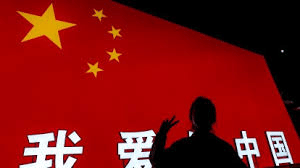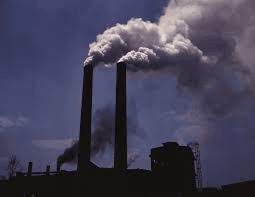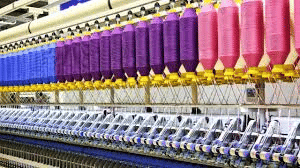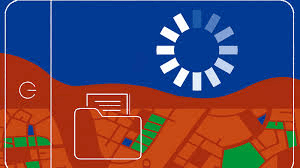UPSC Daily Current Affairs: 28th September 2024 | Current Affairs & Hindu Analysis: Daily, Weekly & Monthly PDF Download
GS2/International Relations
India grapples with China Shock 2.0
Source: Indian Express

Why in News?
Global markets are currently witnessing a surge in Chinese exports, termed as "China Shock 2.0." This phenomenon has escalated trade tensions, prompting major economies, including the US and India, to respond with increased tariffs to mitigate the influx of Chinese goods.
- In the 2000s, discussions arose about whether China would evolve into a capitalist powerhouse or maintain its communist roots.
- US President Bill Clinton championed China's entry into the WTO, believing that economic integration would spur political reforms in Beijing.
- He posited that China's WTO membership would boost American imports and foster democratic principles.
- However, the aftermath of China’s accession to the WTO led to what is known as the "China Shock."
- Affordable Chinese products, fueled by a vast and inexpensive labor force, inundated global markets.
- This situation resulted in significant manufacturing job losses worldwide.
- This adversely affected Western economies and negatively impacted Indian manufacturing and trade.
Statistics
- China’s share of the global export market increased from below 14% to over 15.5% in the past five years.
- Between July 2023 and July 2024, Chinese exports rose by $18.8 billion (6.67%), from $282 billion to $301 billion, while imports increased by $14.8 billion (7.33%), from $201 billion to $216 billion.
- China is now recognized as the world's largest exporter and trading nation.
Factors driving the renewed wave of goods exports by China
- China aims to ascend the export value chain towards high-tech sectors, including solar technology, electric vehicles, and semiconductors.
- A domestic demand slump compels China to export more aggressively.
- Supporting factors include:
- Government policies providing tax incentives and subsidies.
- Increased focus on research and development (R&D) as part of its industrial policy.
Made in China 2025 strategy
- Beijing's "Made in China 2025" initiative is a strategic plan aimed at positioning China as a global leader in high-tech manufacturing by 2049.
- Introduced in 2015, this strategy focuses on:
- Achieving 70% self-sufficiency in high-tech industries by 2025.
- Competing with other manufacturing rivals by 2035.
- Transforming into a global manufacturing powerhouse by 2049.
- The strategy promotes advanced sectors like electric vehicles and renewable energy.
- The government offers subsidies, including low-interest loans and tax breaks, to high-tech companies.
Impact on India and Other Economies
- The IMF has recently expressed concerns regarding China's external surpluses, driven by policies that boost exports amid weak domestic demand.
- This situation could trigger "China Shock 2.0," displacing workers and disrupting industrial activity in other nations.
- The rise in Chinese exports poses a threat to local industries and global trade stability, exacerbating international trade tensions.
- To combat this surge, the US has implemented significant tariff hikes on Chinese imports, including:
- 100% duty on electric vehicles (EVs).
- 50% duty on solar cells.
- 25% duty on steel, aluminum, EV batteries, and specific minerals.
- China ranked as India’s top supplier of goods in 2023-24, with imports valued at $101 billion while India exported goods worth $16.65 billion.
- India's imports from China have escalated at a rapid rate compared to the rest of the world.
- Despite economic restrictions on Chinese firms after the Galwan clash in June 2020, imports from China surpassed $100 billion in 2023-24.
- Notably, imports surged from $70 billion in FY19 to $101 billion in FY24, as per official data.
- This influx could further strain India's manufacturing sector, trade balance, and ambitions to emerge as a global power.
Steel Industry Struggles with Chinese Influx
- Despite a decline in exports, Chinese steel exports have surged globally, including in India. Key statistics include:
- Iron and steel exports dropped nearly 19% year-on-year in August 2024.
- Finished steel imports from China to India reached a seven-year high in the first five months of FY24-25.
- India's overall finished steel imports hit a six-year record of 3.7 million metric tons between April and August 2024.
- The influx of Chinese steel is impacting profitability and threatening the stability of steel industries globally, particularly in Europe and India.
China’s dominance in electronics
- Chinese mobile phone exports have surged in the last two years, aided by investments from global tech companies like Apple, which has expanded its manufacturing in China.
- India's dependence on Chinese imports for electronic components remains significant. In 2023, India imported:
- Over $12 billion worth of electronic components from China.
- Approximately $6 billion from Hong Kong, together representing over half of India’s total electronic component imports.
- Despite growth in domestic electronics manufacturing, India's reliance on China remains largely unchanged.
- Electronic components imports, valued at $34.4 billion, were the fifth-largest category after crude oil, gold, petroleum products, and coal, according to Ministry of Commerce data.
Strategy employed by India
- India is adopting a dual strategy:
- Imposing anti-dumping and anti-subsidy duties.
- Implementing quality control orders (QCO) to regulate imports of inexpensive items from China.
- New Delhi is also contemplating collaborations with other Western nations to address the challenge posed by Chinese high-tech products capturing a substantial share of the global market.
Counter response by China - Blocking India’s access to solar equipment
- The Economic Survey 2023-24 cautioned that in response to India's anti-dumping measures against Chinese companies, China has been quietly obstructing India's access to solar equipment.
- India has set a target to attain 500 GW of renewable energy capacity by 2030, but 80% of its solar cells and modules are sourced from China, which dominates the global solar supply chain.
GS3/Environment
Tackling Air Pollution
Source: Business Standard

Why in news?
On September 25, Delhi's air quality fell into the 'poor' category (AQI 200-300) for the first time since mid-June, signaling the onset of North India’s pollution season. In response, the Delhi government has introduced a 21-point Winter Action Plan aimed at mitigating pollution, which includes:
Air Quality Index (AQI)
The AQI was introduced in October 2014 to provide the public with clear information about air quality. It simplifies complex data on various pollutants into a single, comprehensible number.
- The AQI is calculated based on eight pollutants:
- PM10
- PM2.5
- NO2
- SO2
- CO
- O3
- NH3
- Pb
Commission for Air Quality Management (CAQM)
The CAQM is a statutory body established under the Commission for Air Quality Management in National Capital Region and Adjoining Areas Act of 2021. Its mission is to enhance coordination, research, identification, and resolution of air quality issues in the NCR and nearby regions.
India’s Air Pollution Crisis Set to Worsen Post-Monsoon
With the end of the southwest monsoon season, air pollution in India is anticipated to escalate due to stagnant air and temperature inversions, which occur when warm air traps cooler air near the ground, hindering the dispersion of pollutants. This condition results in dangerously high levels of PM2.5 and other pollutants.
- While winter smog becomes more pronounced, poor air quality is a persistent problem that necessitates ongoing and comprehensive action.
- Meteorological phenomena such as temperature inversions and low wind speeds significantly affect pollution levels, especially in the Indo-Gangetic plain.
Inequality and Air Pollution
Economic disparity intensifies the air pollution crisis, as wealthier individuals can invest in air purifiers or move to cleaner environments, whereas low-income communities bear the brunt of toxic air. This situation underscores the inequity in access to clean air.
Various Pollution Sources
India's air pollution crisis arises from numerous interrelated sources:
- Year-round contributors like biomass burning for cooking, waste burning, vehicle emissions, and industrial operations.
- Episodic sources such as agricultural stubble burning and firecrackers during festivals.
Current strategies
India has implemented several surface-level measures to tackle air pollution, including:
- Smog towers
- Water guns
- Odd-even vehicle rotation schemes
- Cloud seeding, a technique that disperses chemicals to induce rainfall, providing temporary relief from air pollution.
These methods often prioritize visible results over addressing the underlying causes of pollution.
Cloud Seeding: Limited Impact and Ethical Concerns
Cloud seeding offers only a temporary solution, distracting from necessary systemic changes. Its environmental and ethical implications include:
- Redistributing rainfall, which may deprive other regions and worsen water scarcity.
- Long-term risks to agriculture and ecosystems due to chemicals such as silver iodide.
- In a water-stressed country like India, cloud seeding could exacerbate regional disparities.
Flaws of Smog Towers
Smog towers are designed to purify the air in their vicinity, but their effectiveness is limited to localized areas, failing to address broader pollution challenges. Additionally, the energy required to operate these towers may contribute to further emissions, potentially rendering them counterproductive.
Way Forward
India must shift its focus from superficial responses to systemic solutions for air pollution. This includes:
- Implementing science-based solutions and adopting a coordinated, multi-sectoral approach.
- Encouraging collaboration among government agencies responsible for transportation, industry, agriculture, and urban planning.
- For example, addressing crop stubble burning requires cooperation among farmers, policymakers, and regulatory bodies.
- A unified, continuous, nationwide strategy is essential.
GS3/Economy
Textile Sector in India
Source: Money Control

Why in news?
The textile sector is a vital part of India's economy, showcasing a blend of tradition and modernity. This industry is undergoing significant changes due to government initiatives aimed at boosting production and employment, especially in the wake of recent economic challenges.
Introduction to the Textile Sector
- The textile industry is among the oldest in India, significantly impacting the country's economic framework.
- It includes various processes such as fiber production, spinning, weaving, knitting, dyeing, and apparel manufacturing, contributing to economic growth and rural upliftment.
Significance of the Textile Sector in India
- Economic Contribution: Contributes approximately 2.3% to India's GDP and 7% to industrial output.
- Employment: The sector is the second-largest employer after agriculture, providing jobs to over 45 million directly and supporting around 100 million indirectly.
- Exports: Accounts for about 12% of total export earnings, with exports valued at around $44.4 billion in FY 2023.
- Diverse Segments: Includes handloom, power loom, and mill sectors; India leads globally in cotton, jute, and silk production.
Key Segments of the Textile Industry
- Cotton Textiles: India is the largest global producer of cotton, contributing over 30% of worldwide production.
- Handloom and Handicrafts: This sector, employing over 4.3 million weavers, showcases India's cultural heritage through traditional designs.
- Technical Textiles: A fast-growing sector focusing on functional textiles used in healthcare, automotive, and agriculture, expecting to reach $23 billion by 2025.
- Man-Made Fibres (MMF): Contributes 30% to the market, includes durable synthetic fibres like polyester.
Current Challenges Facing the Textile Sector
- Raw Material Fluctuations: Price volatility, especially in cotton, affects production costs and profitability.
- Technological Upgradation: Many units use outdated technology, necessitating investment in modern machinery to enhance productivity.
- Environmental Concerns: The sector is resource-intensive, raising sustainability issues that need eco-friendly practices.
- Competition from Other Countries: Faces tough competition from nations like Bangladesh, Vietnam, and China, which have lower production costs.
- Regulatory Hurdles: Complex compliance with regulations can lead to delays and increased costs for manufacturers.
Government Initiatives to Boost the Textile Sector
- Production Linked Incentive (PLI) Scheme: A ₹10,683 crore initiative aimed at boosting production of MMF and technical textiles, expected to attract investments worth ₹19,000 crore and create 7.5 lakh jobs.
- National Technical Textiles Mission: Launched with a budget of ₹1,480 crore, it aims to establish India as a leader in technical textiles through enhanced production and research.
- Amended Technology Upgradation Fund Scheme (ATUFS): Provides financial support for machinery upgrades, promoting modernization and increased productivity.
- Skill Development Programs: Initiatives like Samarth aim to train over 10 lakh youth in textile trades to meet industry demands.
- Mega Integrated Textile Region and Apparel (MITRA) Parks: Plans to establish 7 parks with advanced infrastructure to attract investments and enhance competitiveness.
News Summary:
- Approximately 12 textile companies are set to receive the initial incentive payments under the PLI scheme, following signs of export recovery.
- The PLI scheme, launched in 2021, focuses on boosting the production of MMF, apparel, and technical textiles, leveraging India's value chain.
- The Ministry of Textiles aims to create 4.5 to 6 crore jobs by 2030 and expand the market size from $165 billion to $350 billion.
- Despite these initiatives, India’s textile exports have declined for the second consecutive year in 2023-24.
- The World Bank noted that India's share in global labor-intensive sectors, including apparel and textiles, has stagnated, while competitors like Bangladesh and Vietnam are gaining market share.
- It suggests that India could enhance textile sector growth by diversifying exports and reducing trade barriers.
GS2/Governance
Why Digitisation is Not Enough to Reform Land Laws
Source: Indian Express

Why in News?
India’s land governance system is intricately woven into a complex web of legal, institutional, and administrative issues that have impeded the country's economic and social progress. The Economic Survey 2023-24 highlights these challenges as significant obstacles to achieving various developmental goals. Although the 2024 Budget proposed technological solutions to modernize India's land administration, these initiatives do not tackle the deeply entrenched legal and institutional barriers obstructing effective land governance.
An Analysis of Barriers in Land Governance
- Unclear Land Titles and Insecure Tenure
- A major challenge in India’s land governance is the absence of clear and secure land titles.
- Land ownership is often ambiguous due to outdated records, poor maintenance of registries, and overlapping claims.
- This issue is particularly severe in rural areas, where many landholdings are informal and unregistered.
- Farmers and landowners hesitate to invest in long-term land improvements due to a lack of formal ownership proof.
- Ambiguous ownership frequently results in land disputes, which burden the judicial system.
- Fragmented and Conflicting Legal Framework
- India’s land governance is governed by numerous conflicting laws that vary by state, complicating and hampering efficiency.
- These laws regulate ownership, transfers, leasing, and land use in often contradictory ways.
- Many laws impose restrictions on agricultural land transfers, limiting who can purchase land and imposing rigid regulations.
- Fragmentation of Land Holdings
- Land fragmentation poses a severe challenge in India’s agricultural sector.
- As land is inherited through generations, it is divided into increasingly smaller parcels.
- Small landholdings prevent farmers from achieving economies of scale and investing in modern agricultural practices.
- Gender Inequality in Land Ownership
- Despite legal provisions aimed at improving women’s land ownership access, gender inequality remains a critical issue.
- Rural women are often denied their rightful property shares due to social norms and patriarchal traditions.
- While laws like the Hindu Succession Act grant women equal inheritance rights, many still face pressure to relinquish claims in favor of male relatives.
- Land Use Restrictions and Regulatory Barriers
- Many laws impose strict land use regulations, especially in agriculture.
- These outdated regulations prevent land from being converted to more economically viable uses, such as industrial or commercial development.
- Such restrictions also limit leasing opportunities, inhibiting investment in the land.
Proposed Reforms: Digitisation and Its Limitations
- Digitisation Initiatives
- The 2024 Budget proposed several digitisation initiatives, including digitising land records and creating land registries.
- Unique identification numbers for land parcels were suggested, along with the integration of records with digital platforms like Agri Stack.
- Limitations of Digitisation
- While digitisation can modernise land record management, it does not resolve the fundamental legal and institutional issues.
- Uncertainty concerning land ownership is not solely due to paper records but is rooted in conflicting laws and administrative practices.
- For instance, converting urban land records to digital formats does not guarantee improved ownership or access to credit as long as the legal framework is convoluted and restrictive.
- Persistent legal ambiguities, particularly in agricultural land leasing, further diminish digitisation's effectiveness.
The Real Solution to India’s Complex Land Governance System
- Legal Recognition of Land Titles
- Reform must include establishing a legally recognized and enforceable system of land titles.
- A unified framework providing clear ownership records is essential.
- The current system, where ownership is based on possession rather than formal title, needs to be replaced to secure property rights.
- Guaranteed Tenure Security
- Strengthening tenure security is vital to encourage investment in land.
- Farmers need assurance against expropriation or disputes to make long-term agricultural investments.
- Clear property rights are necessary for access to formal credit, as banks prefer secured loans backed by legally recognized titles.
- Liberalising Land Transfers
- Many state laws impose unnecessary restrictions on the sale and purchase of agricultural land.
- Such restrictions hinder efficient land transfers, stifle investment, and discourage consolidation.
- Legal reforms should aim to remove these restrictions while ensuring land transfers are transparent and equitable.
- Reforming Land Leasing Laws
- In many states, land leasing is either prohibited or heavily regulated, which creates barriers to efficient land use.
- Owners unable to farm their land cannot legally lease it to capable farmers.
- Reforming leasing laws to allow flexible and transparent arrangements would enhance agricultural productivity.
- Simplifying Consolidation Procedures
- Legal and administrative barriers to land consolidation must be removed.
- This could involve simplifying the process for merging small land parcels into larger, economically viable holdings.
- Legal frameworks should promote voluntary land consolidation by offering incentives for merging parcels.
- Supporting Collective Farming Models
- Collective farming models allow small farmers to pool resources and land for economies of scale.
- Legal reforms could support these models with clear guidelines for land pooling and management.
- This would ensure farmers retain ownership rights while benefiting from joint production.
Conclusion
While digitisation can aid in modernising land administration, it represents only one aspect of the solution. Without addressing the intricate web of conflicting laws, regulatory restrictions, and administrative inefficiencies, India cannot fully leverage its land resources for economic growth and social equity. Genuine progress will require a blend of legal reforms and technological advancements to create a more inclusive and effective land governance system.
GS2/Polity
How can the Judiciary Discipline Judges?
Source: Live Law

Why in News?
A Bench of the five senior-most Supreme Court judges, led by Chief Justice of India (CJI), has raised significant concerns regarding inappropriate remarks made by a Karnataka High Court Justice, V Srishananda.
Comments Made by the Karnataka HC Judge:
- During a court session, the judge referred to a specific area of Bengaluru as being akin to Pakistan.
- In another instance, he made an inappropriate comment regarding a female lawyer.
- The Supreme Court later retracted its intervention after the judge issued an apology.
- Even a mild reprimand from the Supreme Court to a judge of a constitutional court is rare and sends a significant message.
- This incident underscores the constitutional constraints on how judges can be disciplined by the judiciary.
Watchdog of the Judges of Constitutional Courts:
- The Constitution of India, under Article 124(4), states that a judge of the Supreme Court or any High Court can only be removed from office by the President following a resolution passed by both Houses of Parliament.
- This resolution must be supported by a majority of the total membership of each House and by at least two-thirds of the members present and voting.
- A judge can be removed only on grounds of proved misbehavior or incapacity.
- This provision is significant as it offers substantial protection to judges, allowing them to perform their duties without fear of executive interference.
Issues with the above provision - Impeachment or nothing:
- The only mechanism for addressing the misconduct of judges is impeachment, which is a political process.
- Judges can only be removed for "proved misbehavior" or "incapacity," making the grounds for removal very limited.
- The high level of political consensus required for passing an impeachment motion raises the threshold for action against judges significantly.
Previous Instances of Impeachment Proceedings Against the Judges:
- There have been only five documented instances of impeachment proceedings:
- Justice V Ramaswami (Supreme Court, 1993)
- Justice Soumitra Sen (Calcutta High Court, 2011)
- Justice J B Pardiwala (Gujarat High Court, 2015)
- Justice C V Nagarjuna (High Court of Andhra Pradesh and Telangana, 2017)
- Former CJI Justice Dipak Misra (2018)
- None of these impeachment motions were successful, although Justice Sen was impeached by the Rajya Sabha and subsequently resigned.
Alternatives to impeachment:
- Over time, the Supreme Court has developed alternative methods for disciplining judges, given that the current framework offers little recourse aside from impeachment.
Judicial Interventions to Discipline Judges:
- Judicial actions taken by the Supreme Court carry significant weight, as its decisions are final and binding.
- This allows the Supreme Court to communicate disapproval to errant judges, despite such powers not being explicitly detailed in law.
- For instance, a five-judge Bench of the Supreme Court, under then CJI Jagdish Khehar, found Calcutta High Court judge C S Karnan guilty of contempt of court and sentenced him to six months in prison in 2017.
- Karnan retired shortly after the verdict and was taken into custody to serve his sentence, setting a controversial precedent regarding one constitutional court disciplining another's judges.
- Transfer policy: The Supreme Court Collegium, consisting of the five senior-most judges including the CJI, has the authority to recommend the transfer of High Court judges.
- This transfer policy, which lacks transparency, can be used as a disciplinary tool against judges.
- For example, in 2010, Karnataka High Court judge P D Dinakaran was transferred to the Sikkim High Court amid allegations of land grabbing and corruption, although some criticized it as merely "transferring corruption." He eventually resigned in 2011.
GS3/ Science and Technology
ABHED Bulletproof Jacket
Source: Financial Express

Why in News?
Defence Research & Development Organisation (DRDO), along with researchers of Indian Institute of Technology (IIT) Delhi has developed Light Weight Bullet Proof Jackets named ABHED (Advanced Ballistics for High Energy Defeat).
About ABHED Bulletproof Jacket:
- ABHED (Advanced Ballistics for High Energy Defeat) is a project developed by DRDO and IIT Delhi.
- The jackets are made from polymers and local boron carbide ceramic.
- The design is based on studying different materials under high strain rates, followed by suitable modeling and simulation.
- These new jackets can handle very high threat levels and are lighter than the maximum weight limits set for the Army.
- They aim to improve soldier protection and mobility.
- With a minimum weight of 8 kg and 9.3 kg for various BIS levels, these jackets have a modular design and include front and rear armor, offering 360-degree protection.
- The jackets have been rated as BIS level 5 and BIS level 6 by the Bureau of Indian Standards, which sets standards for bullet-resistant jackets and ballistic shields for the Indian Army.
- The design ensures 360-degree protection with modular armor plates that can be adjusted for different mission needs, giving soldiers flexibility in various combat situations.
GS2/ Polity and Governance
SASTRA Ramanujan Prize
Source: The Hindu

Why in News?
Alexander Dunn has been awarded the prestigious 2024 SASTRA Ramanujan Prize.
About SASTRA Ramanujan Prize:
- It was established in 2005.
- The award is given every year by SASTRA University, located near Kumbakonam in Tamil Nadu, on December 22, which is Ramanujan’s birthday.
- Eligibility:
- This prize is awarded annually to mathematicians worldwide who are under 32 years old and work in areas related to Srinivasa Ramanujan.
- The age limit of 32 years honors the incredible work Ramanujan achieved in his brief life.
- Cash Prize: It includes a citation and a cash award of $10,000.
- This award has gained international recognition since it was first given.
- Notable Recipients:
- Manjul Bhargava
- Akshay Venkatesh
- Contribution of Dunn:
- Dunn is recognized for his exceptional work in analytic number theory, especially his collaboration with Maksym Radziwill in addressing the Kummer-Patterson Conjecture concerning the bias associated with cubic Gauss sums.
- His research marks a major breakthrough in the field.
GS3/Environment
Cassowary
Source: DTE

Why in News?
Every year, World Cassowary Day is observed on September 26 to draw international attention to the reasons these birds are important for the world at large
About Cassowary
- Cassowaries are large birds that cannot fly and are most closely related to the emu.
- They are known as the most dangerous birds in the world.
- Cassowaries are strong swimmers and can move quickly on both land and water.
- These birds are usually shy and can be difficult to see in their natural rain forest homes.
- Distribution:
- They are originally from New Guinea and can also be found in Australia.
- There are three types of cassowaries:
- The southern cassowary (Casuarius casuarius) is the biggest and lives in lowland rainforests, eucalyptus forests, and swampy areas.
- The northern cassowary (Casuarius unappendiculatus) can be found in coastal swamps and lowland rainforests of northern New Guinea.
- The dwarf cassowary is smaller and weighs about 50 pounds. They live at higher altitudes in steep mountainous regions.
- Ecological Significance:
- Cassowaries play an important role in spreading seeds from native plants, helping to maintain plant diversity in rainforests.
- Cultural Significance:
- They hold cultural importance for some Aboriginal groups, appearing in traditional ceremonies, dances, and Dreamtime stories.
- Many indigenous groups are now involved in cassowary conservation, combining traditional ecological knowledge with modern science.
GS3/ Science and Technology
KH-22 Cruise Missile
Source: EurAsian Times

Why in News?
The Tu-22M3 missile carriers of the Russian Aerospace Forces recently struck Snake Island in the Black Sea with Kh-22 cruise missiles.
About KH-22 Cruise Missile:
- This is a long-range, supersonic cruise missile from the Soviet era.
- It is also referred to by the NATO name AS-4 'Kitchen'.
- The Kh-22 missile family was created in the USSR during the 1960s and was specifically made to be launched from Tupolev-22 bombers.
- The main purpose of this missile was to target large naval vessels, such as aircraft carriers, and it could carry either conventional or nuclear warheads.
- It has notable specifications, including a maximum speed of up to Mach 4.6 and a range of around 600 kilometers.
- The missile has a weight of 5,820 kilograms.
- Approximately 3,000 of these missiles were manufactured in the USSR.
- After the collapse of the USSR, many missiles remained in Ukraine. However, shortly after gaining independence in 1991, Ukraine relinquished its nuclear and strategic aviation weapons.
- In 2000, Ukraine transferred 386 Kh-22 missiles to Russia as part of a payment for gas debt.
- The successor to the Kh-22 is the Kh-32, which can be carried by the new Russian Tu-22M3M bombers.
- The new missile has a conventional warhead, an enhanced rocket motor, and a new radar imaging terminal seeker. It offers a longer range but has a smaller warhead size.
|
38 videos|5288 docs|1117 tests
|





















